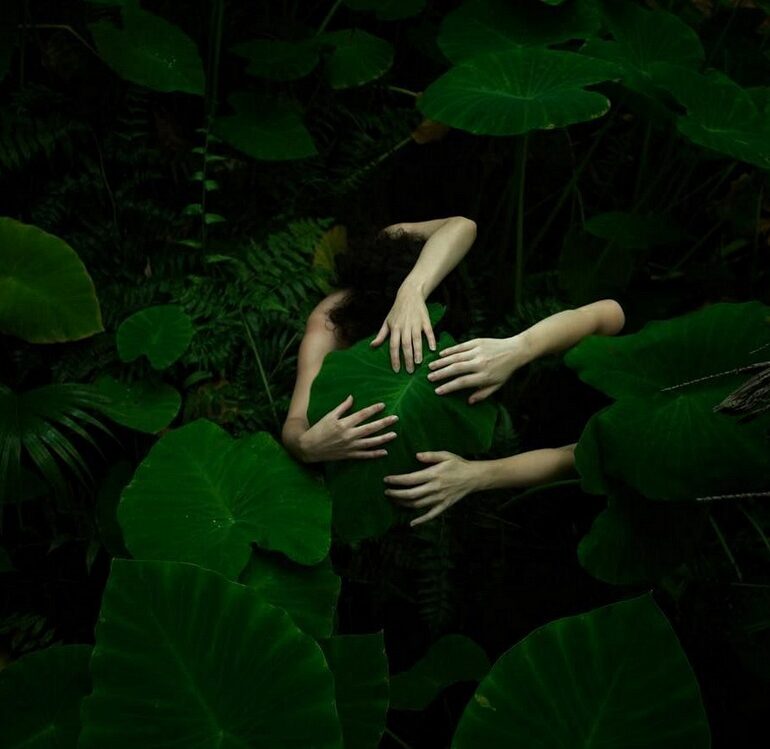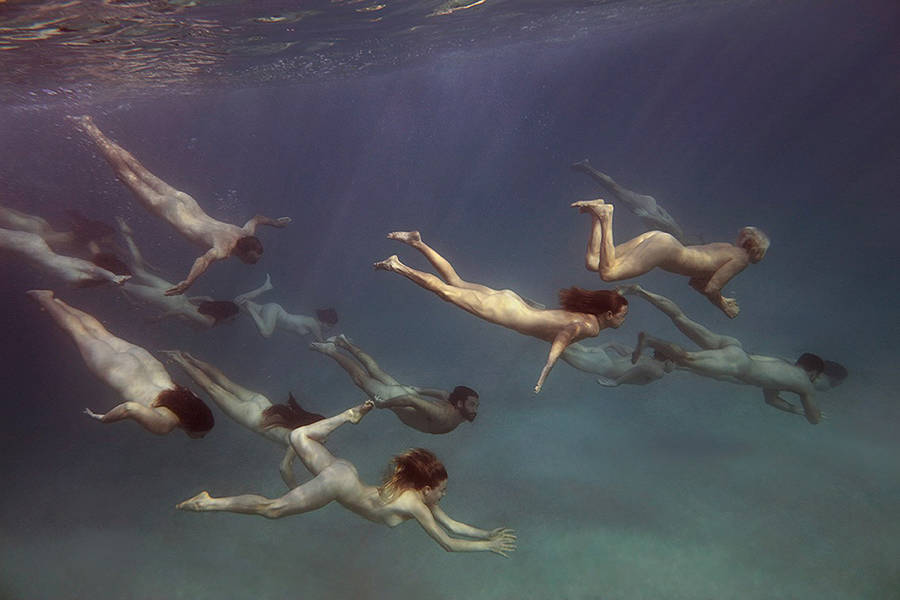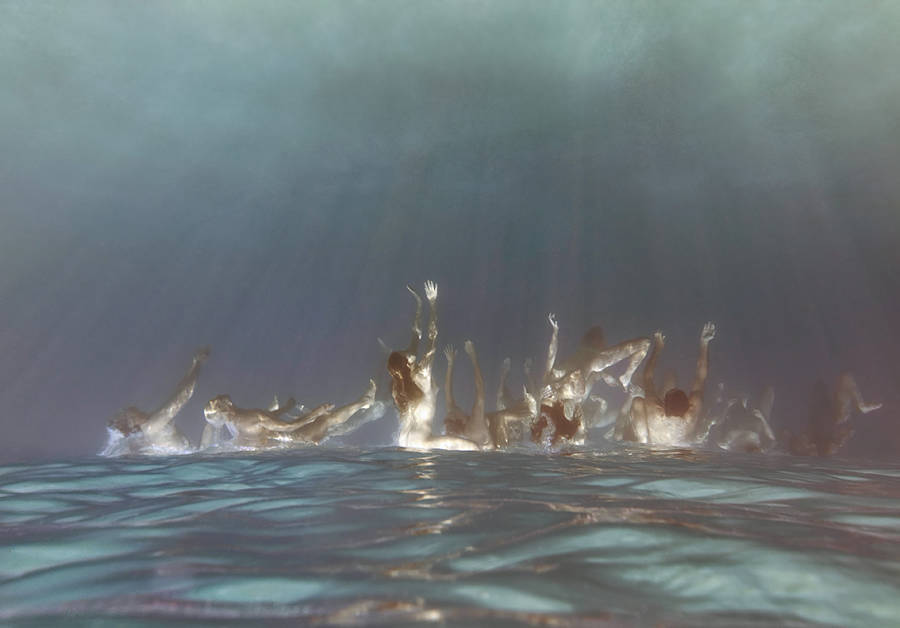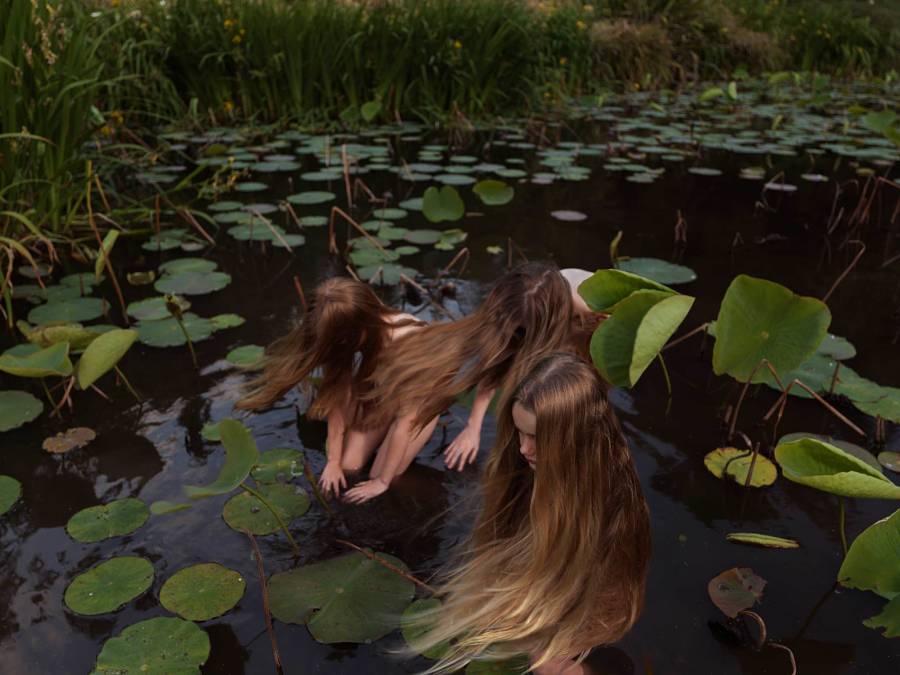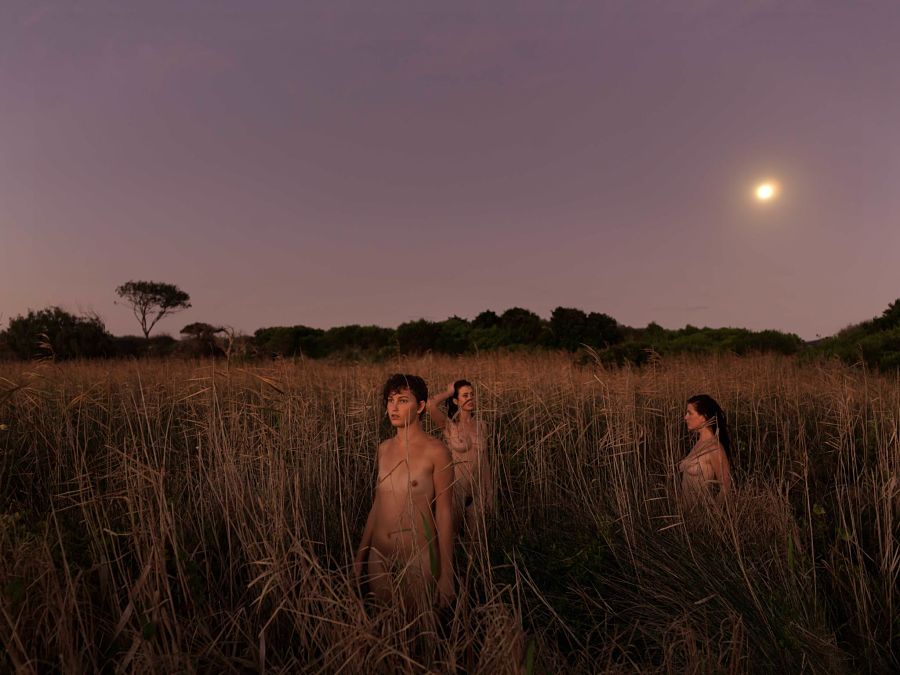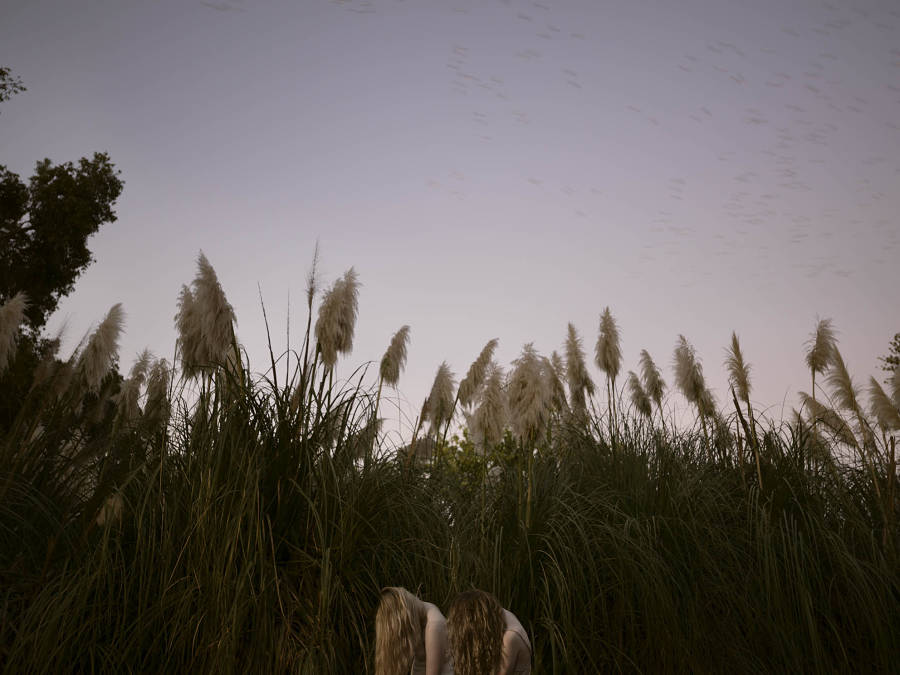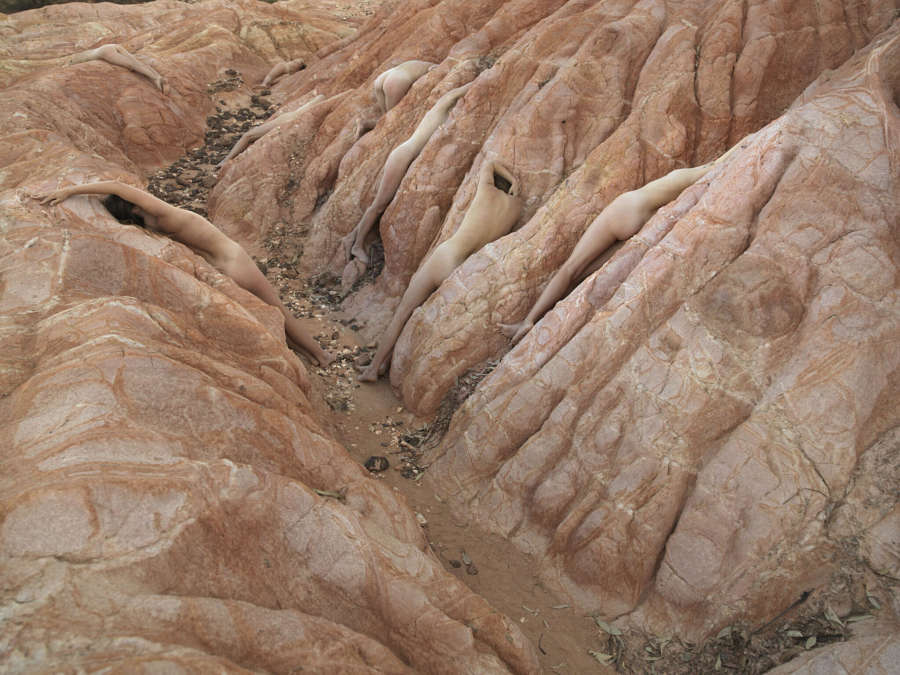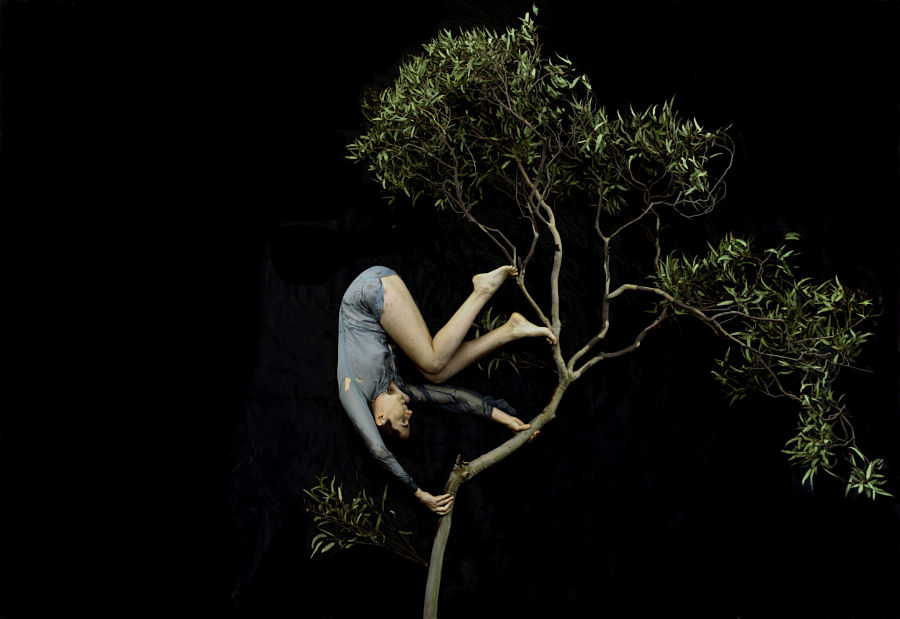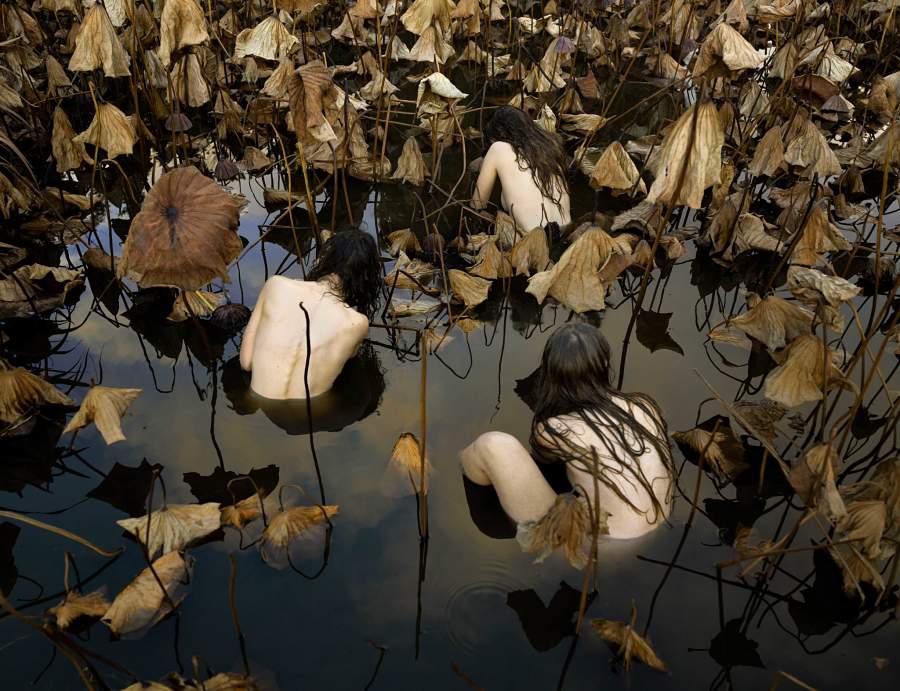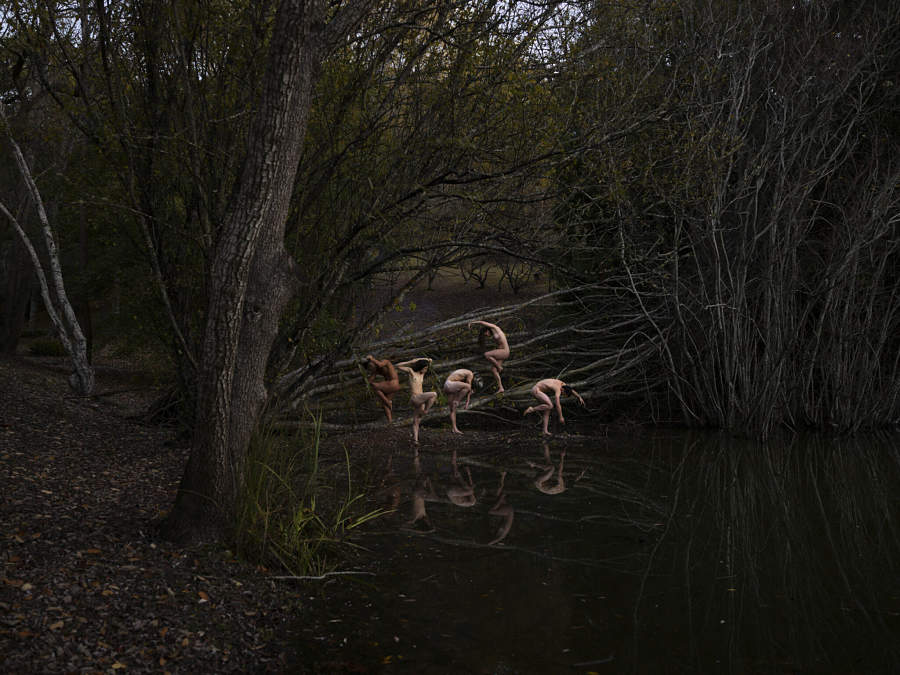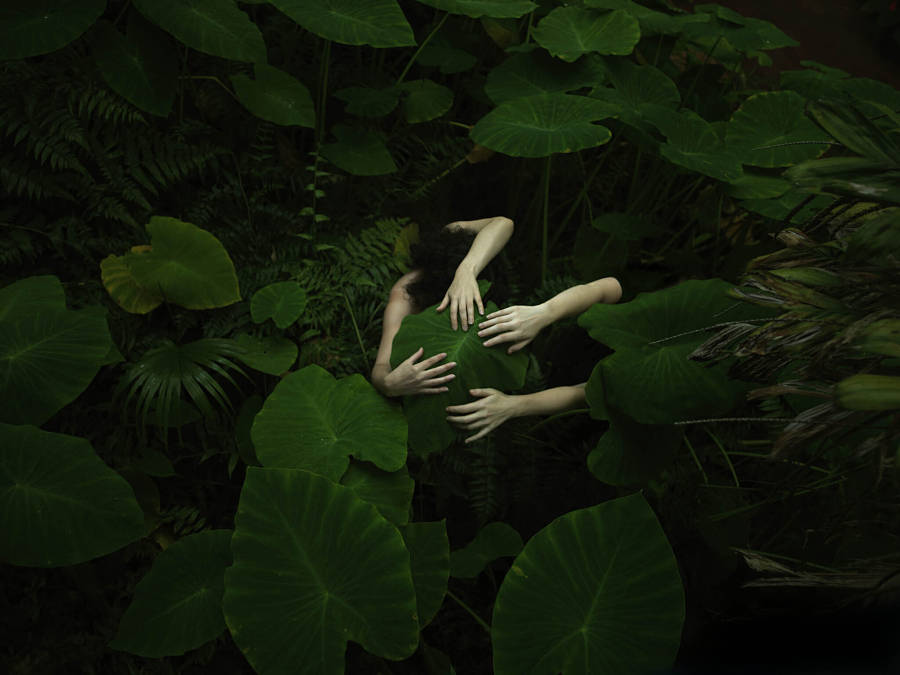Exclusive Interview with Tamara Dean, 2nd Prize Winner, iCanvas Photography Award, 2020 Beautiful Bizarre Art Prize
Australian photographer Tamara Dean comments on the unbecoming of our natural world and the need to repair it. She is the second place winner of the iCanvas Photography Award as part of the 2020 Beautiful Bizarre Art Prize for her photograph, Endangered 1, which plunges us into a spiritual ocean at the mercy of the deep. Tamara’s photography often reveals nature’s splendour, ethereal in tone, from lush chartreuse swampland to deserts of antiquity. Too often we protect ourselves by hiding in the shelters of our making, Tamara Dean reminds us that we should break down the walls and rediscover the wilds that surround us.
My intention with these works is to change the narrative; show that in an age of mass extinction humanity is as vulnerable as every other living creature, to make the point that this is personal.
Living in the contemporary present can sometimes be akin to living in a conservatory; a window view of the natural world that we no longer seem to belong. We are living in a disconnect, alienated from Mother Earth itself. It has caused us to disregard the hurt we have inflicted on the lands and seas that do not belong to us but to all living things. Tamara hopes to heal our relationship with nature by creating a sense of harmony through her most recent photography. We are reintroduced, naked, into the hinterland; a mise-en-scene of pure, restorative surrender.
In the following interview, Tamara Dean explains the behind-the-scenes of her photographic visions.
Interview with Tamara Dean by Andrea Kovacic
Congratulations! You’ve won 2nd place in the iCanvas Photography Award as part of the 2020 Beautiful Bizarre Art Prize. Please describe the meaning behind your award-winning work, Endangered 1.
Thank you! My series ‘Endangered’ (which this work comes from) is a reframing of the notion of ourselves as human beings – mammals in a sensitive ecosystem, as vulnerable to the same forces of climate change as every other living creature.
Biologists predict that if we continue carrying on the way we are, by the end of this century 50% of species living today will face extinction. As much as 45% of biodiversity could be lost by 2050. And humans are not immune. To see ourselves as different and separate to the ecology and ecosystem of our planet is leaving humanity unprepared for the world we are currently destroying.
My intention with these works is to change the narrative; show that in an age of mass extinction humanity is as vulnerable as every other living creature, to make the point that this is personal.
This series is particularly important to me as it speaks directly to my most fundamental concerns and values: my love for the environment and my deep concern for our planet.
Do you remember your very first camera? How has that changed from what you use today?
Yes, it was a Minolta; I can’t remember the model. But the first camera I really started practising my photography with was my Nikon FM2. The biggest difference between the early cameras I used and the ones I use today is the switch from film to digital. I now use a medium format Hasselblad which allows me to create large scale prints.
How much editing, if any, is involved in your process?
I tend to try and achieve as much as I can in-camera. There are some images which call for more editing/imaging than others. I will spend as much time on an image as I feel it needs. This can vary from very little to some which are quite involved when I am compositing.
Describe the process of choosing one image out of thousands, what makes a photograph worthy of print?
This is something entirely intuitively for me. I may be editing through hundreds of images from a shoot, and there will be a small number of photographs that just have something special about them that elevates them, making them stand out from the rest.
It is quite a special experience to have a community who view and respond to my work with such immediacy and positivity. It is especially helpful for me as I live and work from our property in regional Australia and so am relatively isolated. It allows me to interact with an engaged artistic community whilst making work remotely. I find the feedback and engagement really helpful.
Australia’s natural landscape is often viewed as unforgiving, harsh, and prone to fire. How do you see it?
I see so much beauty in the Australian landscape. There is graceful femininity in the sway of a gumtree, and the ancient shapes and marks in the rocks and boulders. I see the age of the Earth in the Australian landscape. It challenges my imagination to perceive how the landscape has been shaped by time and the elements to become the way it is today.
There are some locations in the Australian bushland that I find frightening, but I am in awe for the most part. I love the scents, the sounds and the colours. I especially love being in the landscape just before night sets in when the light is soft, and there is a stillness in the air.
I see the age of the Earth in the Australian landscape.
Your works are often in-motion, akin to performance photography. Explain how you curate a scene.
I approach a shoot with an underlying concept, which defines the series. I share this with the people I am going to be photographing, sometimes along with some image references to give a sense of what mood I’m trying to achieve. Then we go through a series of actions which I ask for them to express in the landscape. This may be as simple as navigating from A to B through a prescribed area.
My aim is to facilitate an experience whereby the person/people I am photographing are engaging with the landscape, allowing them to be ‘in the moment’. This gives the work a sense of authenticity as whilst I have brought the elements (concept, locations, models) together for the shoot, it is still a lived experience for the people I am photographing.
In your photographed worlds, nudity becomes a norm. What stories do you believe the body conveys?
The body unclothed is the easiest way for me to express the sense that we are animals and that we too are vulnerable creatures living within a fragile ecosystem. It also helps to remove the constraints of time, where the body can be seen as a primitive human or someone living today.
Photography is often thought of as a way to preserve memories, but what else do you believe it can preserve?
I believe that the best art and photography has the power to express complex concepts in simple ways. It is a visual language which can be understood universally without the need of words.
What is one thing people may not know about life as a photographer?
It can be quite a solitary experience.
What has 2020 taught you and what do you hope from 2021?
2020 has reminded me that I don’t have to travel far to make photographs. I began my series ‘In Isolation’ on our property, in March 2020, when the first period of self-isolation came in and have been working on it since then. This will be exhibited in August as the inaugural exhibition at the newly built “Ngununggula” Southern Highlands Regional gallery and later in the year at Michael Reid gallery, Sydney.
2020 also brought into stark focus how my daily life, the lives of the people around me, and the delicate balance of life on Earth are being directly affected by the climate crisis we are now experiencing.
My family and I live in regional Australia, the driest inhabited continent on Earth. We depend on the rain to fill our tanks for drinking and cleaning. We had to evacuate numerous times in the Black Summer fires of 2020, with the Currowan bushfire coming as close as 7kms from our home. It was a truly traumatic start to the year. The Covid-19 pandemic has also demonstrated that the causes and effects of climate change are intricately linked with increased risk of pandemics.
I hope that in 2021 humanity makes some massive changes to the current outdated systems which have led to human-induced climate change, putting our environment front and centre in all decision making going forward. Renewables are the cheapest and most ecological form of new energy today. Countries around the world are phasing out fossil fuels as a power source. The world’s brightest minds are trying to catalyse change. We can see that through international unity when we all work together we can start to turn the tide.
